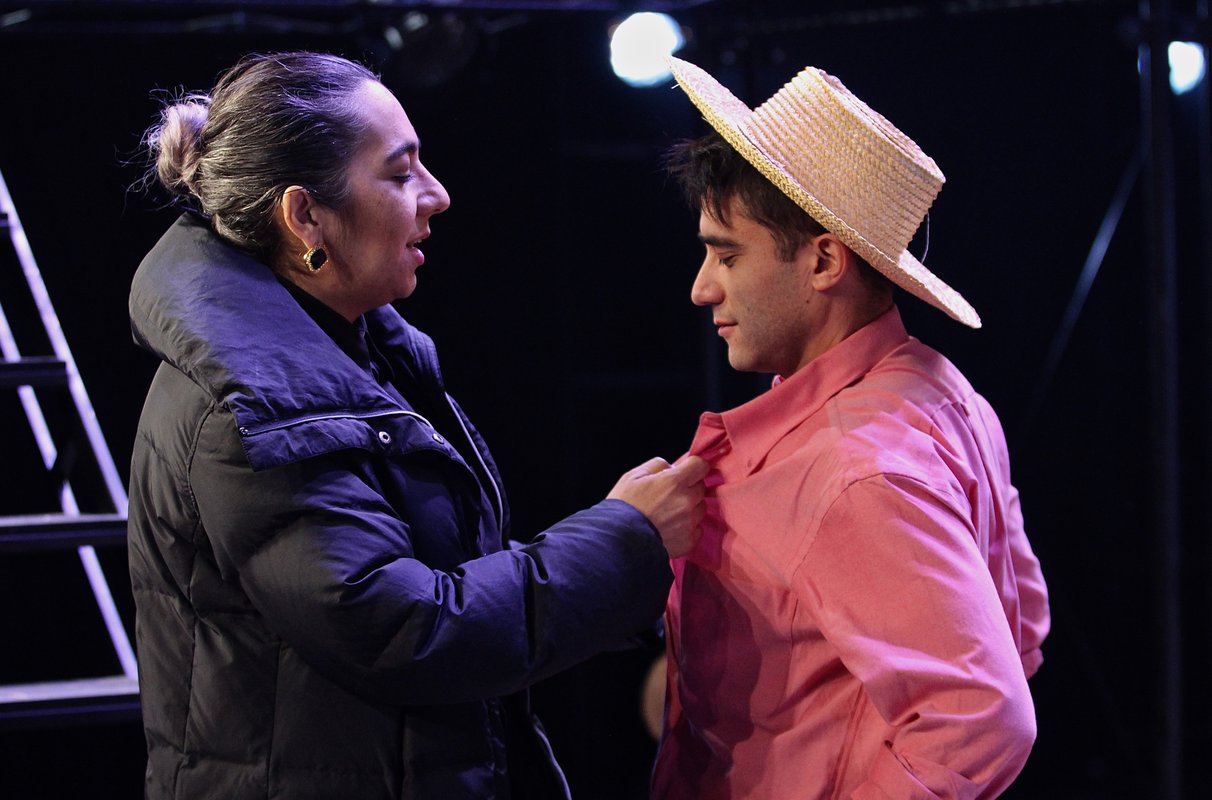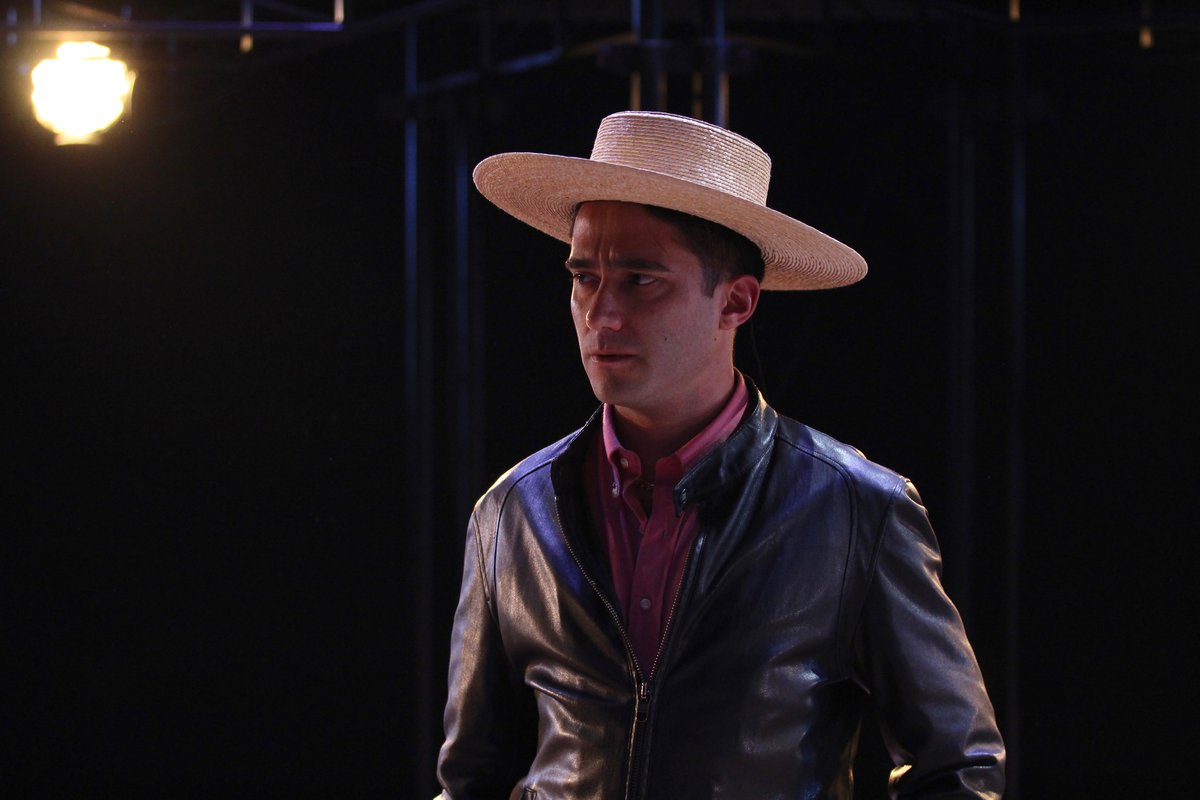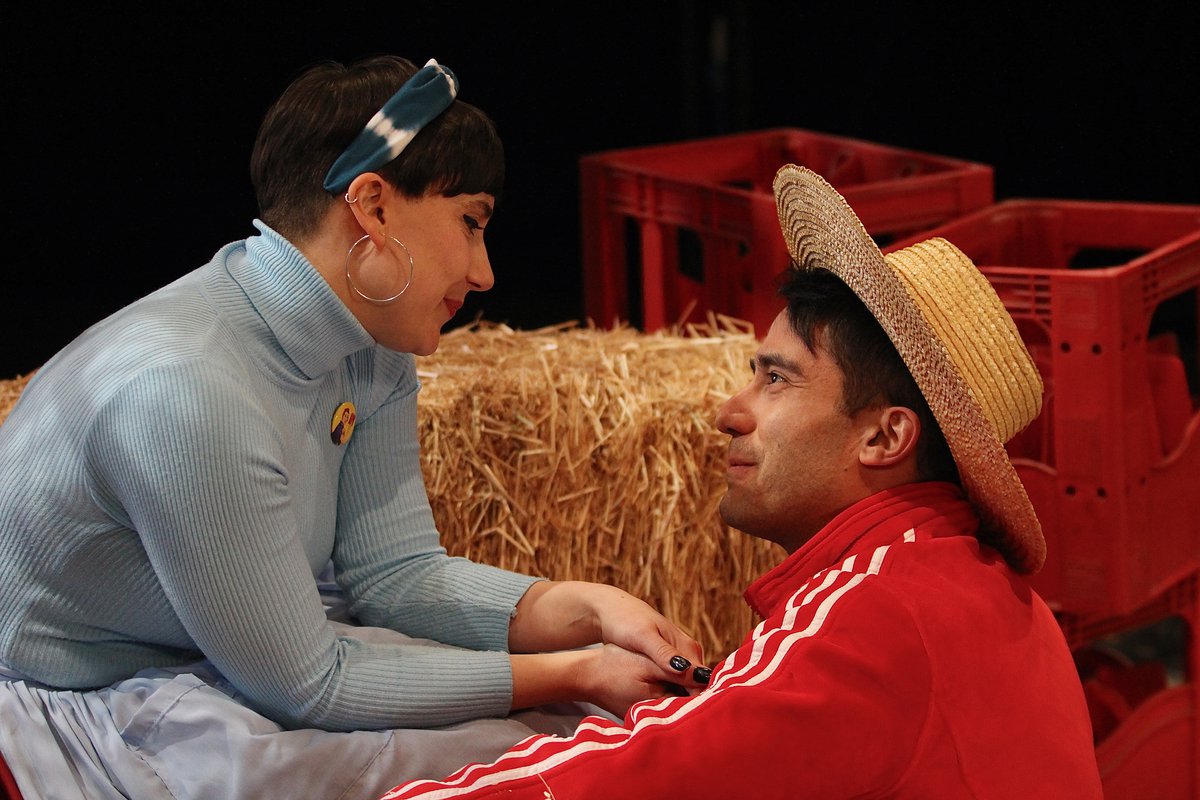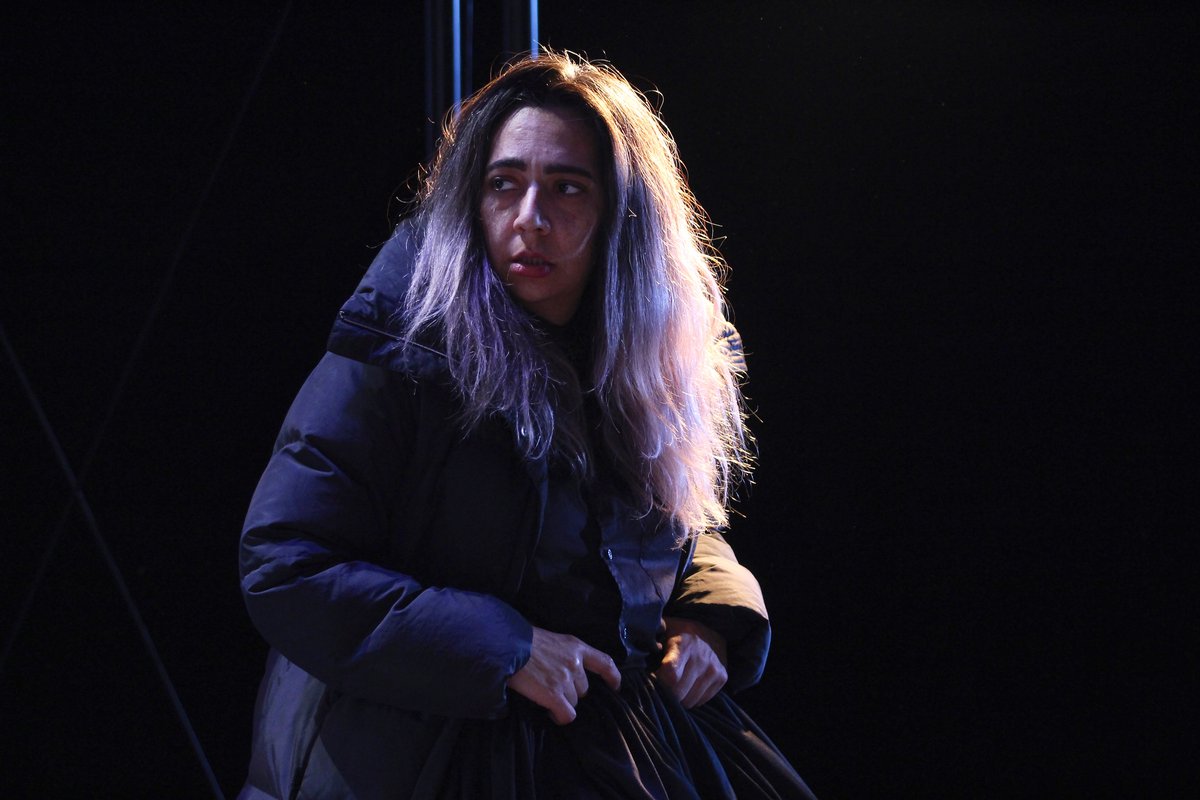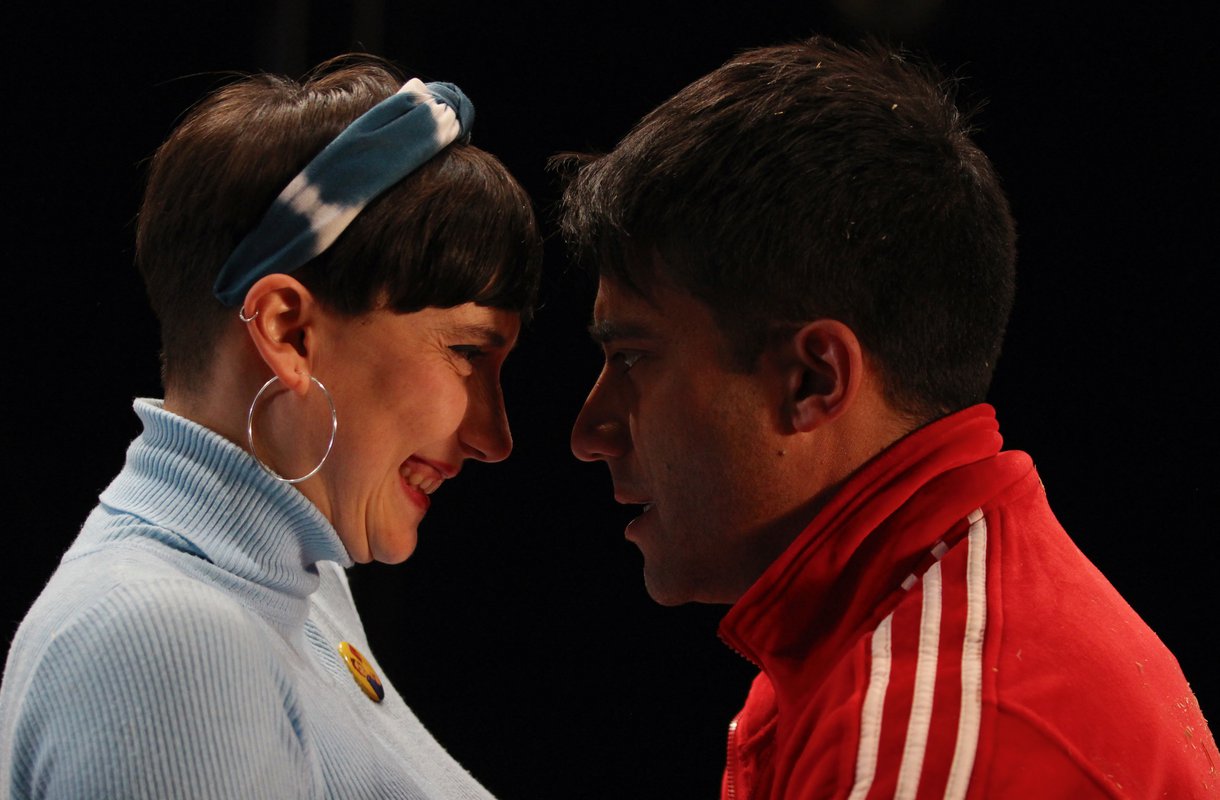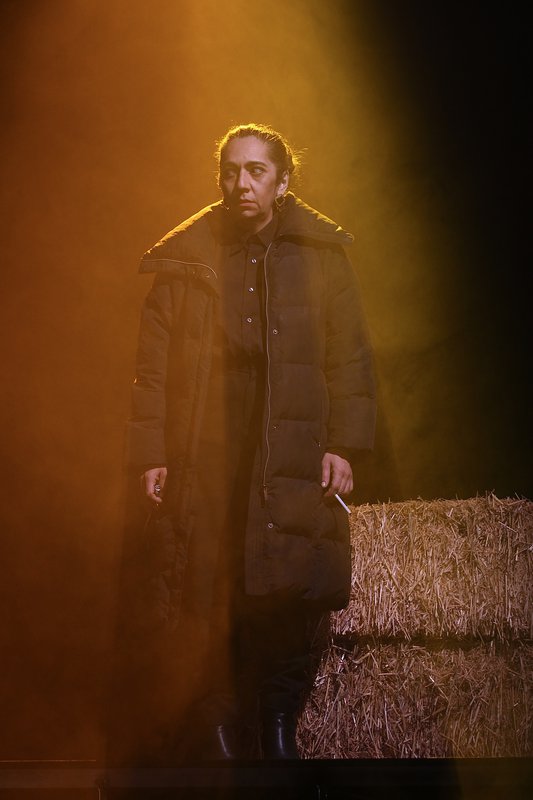Theatre
Written by: Germán Luco Cruchaga | Adapted by: Víctor Carrasco | Company: Teatro La Mala Clase | Directed by: Aliocha De La Sotta | Audiovisual director: Vicente Sabatini | Cast: Mónica Ríos (The Widow), Jaime Leiva (Ñico), Cecilia Herrera (Celinda), Paulina Giglio (Flora), Bosco Cayo (Mr. Jeldres), Verónica Medel (Ms. Meche), Felipe Zepeda (Remigio), Tomás Ahumada (Fidel) | Costume and lighting designer: Felipe Olivares | Music: Fernando Milagros | Produced by: Francesca Ceccotti | Director of photography: David Bravo | Set design and technical coordinator: Cristián Reyes | Producer: Vicente Gana | Assistant director: Josefina Troncoso | Sound: Miguel Gálvez | Sound assistant: Angello Rojas | Cameras: René Mansilla, Iván Araya, Emilio Rodríguez | Head electrician: Willie Leiva | Assistant: Benjamín Cortés | Stage assistant: Marco Mella | Audiovisual technical producer: Fin Comunicaciones | General producer: Pablo Herrera Aguirre | Producer: Álvaro González Ortiz | Technical coordinator: Mauricio Hartard | Assistant technician: Jorge Reyes | Camera assistant: Juan Pablo Cofré | Trailer camera: Constanza Valdivia | Trailer editor: Juan Pablo Cofré | Teatro Lo Prado head technician: Waldo Arévalo | Teatro Lo Prado sound engineer: Julio Quiroz | Photography: Magdalena Chacón | Teatro a Mil Foundation production director: Evelyn Campbell Derderián | Teatro A Mil Foundation on-site producers: Pamela Ruiz Munizaga, Claudia Fres, Fernando Oviedo | In collaboration with the Lo Prado Cultural Center.
Aliocha De la Sotta
Director
One of the great Chilean producers
This actress and director studied at the Fernando González Acting Academy and then at the Royal Conservatory of Brussels in Belgium. She has been part of Teatro La Mala Clase since 2009, directing outstanding pieces such as La mala clase, La chancha, Lefttaru and El Dylan, as well as other plays such as the acclaimed Hilda Peña and Mistral, Gabriela (1945). She is currently part of the cast of Cómo convertirse en piedra, the latest creation from Chilean director Manuela Infante.
Vicente Sabatini
Audiovisual director
A key name in Chilean television
The name of this Chilean television director, producer and executive (1953) is irrevocably linked to the golden age of Chilean drama in the eighties, nineties and noughties. In 1991, he took over as general director of drama at the TVN television channel, spearheading the creation of some of the most successful soap operas in the history of Chilean television, such as Sucupira, Iorana, La Fiera, Pampa Ilusión and El circo de las Montini. He has also directed the Viña and Huaso de Olmué Festivals and the Teletón charity event.
Víctor Carrasco
Screenplay adaptor
Fusing styles
This Chilean actor, television scriptwriter and theater director has written some of Chile’s most successful television series, such as La fiera, Pampa Ilusión and El Circo de las Montini. He was in charge of Teatro de la Palabra, an independent venue, for seven years. As a theater director, he has been behind classics such as Hedda Gabler by Henrik Ibsen and Las tres hermanas by Anton Chekhov and has also directed other award-winning productions, such as La amante fascista (2010) and Los arrepentidos (2018).
Teatro La Mala Clase
The company
Relevant stories that reach a wider audience
This company has a history spanning more than ten years, developing outstanding work for adolescent audiences. Their plays deal with current affairs that demand attention, have been seen by more than 200,000 young people throughout Chile and have been performed at some of Santiago’s greatest theater venues, such as the GAM, the UC Theater and Matucana 100. Their most important plays include La mala clase, La chancha, Leftraru, La historia de los anfibios, El Dylan and, more recently, El nudo.
-It revisits a Chilean theater classic that is relevant even today as we experience a very similar change of paradigm. In the play, a post-First World War country is becoming ever more urbanized and is on the brink of an economic crisis, “which is kind of similar to today’s world. We feel like we’re in that crisis. Just like at that time, we’re living through the tragedy of development”, say actor Jaime Leiva (Ñico) and director Aliocha De la Sotta.
-The way it tells its story and portrays its main characters, particularly The Widow, who is described as a woman who ‘was more of a man than anyone’. Actress Mónica Ríos (The Widow) says that “she’s very different to other widows you see in the theater. She’s a 40, 45 year old woman, not so old; she uses leather jackets and tight trousers, and what she feels for her stepson - who is younger but not much younger than her - is more than just some playful infatuation. It’s lustful, something you don’t see so much in other productions”. Aliocha De la Sotta adds that “Ñico is all Chilean, a man of the land. Looking at gender and the class divide from this play’s perspective is really interesting”.
-Its special audiovisual format captures the spirit of theater but eliminates the division between the stage and the audience by turning the camera into the audience’s ‘eyes’. “It moves around in a circle, 360 degrees, as if the spectator was on the stage”, explains Mónica Ríos.
Germán Luco Cruchaga. Born in Santiago in 1894, he began his career as an illustrator, journalist and director at several different Chilean and Argentine media outlets. In 1926, he decided to step out of the limelight and go and live in the countryside, where he started writing plays. This is when he wrote Amo y Señor (1926) and La viuda de Apablaza (1928), a traditional drama considered one of the pieces that marked the apex of Chilean theater, with several versions (and stars, such as Carmen Bunster, Elsa Poblete and Catalina Saavedra) over the years. In 1932, he went back to journalism as director of the La Nación newspaper and then as editor of the Santiago edition of El Sur de Concepción. He died suddenly in 1936, leaving several plays unfinished.
-Read different press articles and reviews of the play and its different versions over time on the Teatro Chileno website created by the Faculty of Philosophy and Humanities at the University of Chile.
COLABORA



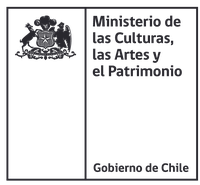


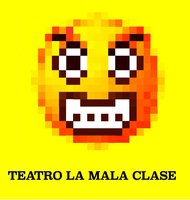
La Viuda de Apablaza
By Germán Luco Cruchaga | Directed by Aliocha De la Sotta | Company Teatro La Mala Clase | Adapted by Víctor Carrasco | Audiovisual director Vicente Sabatini
- Chile
- Spanish
- 84 minutos
A story of love, power and tragedy involving a female landowner and her stepson in 1920s Chile.
Written in 1928, this story of power and destruction involving a female landowner and her younger stepson is revisited in 2022 by Teatro La Mala Clase, incorporating elements from Chilean culture today and mixing different theatrical and audiovisual styles.
Obedience in exchange for power and land is what The Widow offers Ñico, son of her deceased husband, a blunt and reserved man who, over time, came to realize what it meant to be the ‘master’ and fell in love with a young city girl who was visiting. Ñico awakens a passion in The Widow that goes beyond a stepson’s love for his stepmother. She gradually gives him more and more control over her land in a desperate attempt to stop him leaving, sparking a tragedy.
Concepts such as the patriarchy, the figure of women, capitalism and love are revisited in a traditional script that deals with topics that transcend both eras and paradigms.
La Viuda de Apablaza
By Germán Luco Cruchaga | Directed by Aliocha De la Sotta | Company Teatro La Mala Clase | Adapted by Víctor Carrasco | Audiovisual director Vicente Sabatini
- Chile
- Spanish
- 84 minutos
A story of love, power and tragedy involving a female landowner and her stepson in 1920s Chile.
Written in 1928, this story of power and destruction involving a female landowner and her younger stepson is revisited in 2022 by Teatro La Mala Clase, incorporating elements from Chilean culture today and mixing different theatrical and audiovisual styles.
Obedience in exchange for power and land is what The Widow offers Ñico, son of her deceased husband, a blunt and reserved man who, over time, came to realize what it meant to be the ‘master’ and fell in love with a young city girl who was visiting. Ñico awakens a passion in The Widow that goes beyond a stepson’s love for his stepmother. She gradually gives him more and more control over her land in a desperate attempt to stop him leaving, sparking a tragedy.
Concepts such as the patriarchy, the figure of women, capitalism and love are revisited in a traditional script that deals with topics that transcend both eras and paradigms.
Written by: Germán Luco Cruchaga | Adapted by: Víctor Carrasco | Company: Teatro La Mala Clase | Directed by: Aliocha De La Sotta | Audiovisual director: Vicente Sabatini | Cast: Mónica Ríos (The Widow), Jaime Leiva (Ñico), Cecilia Herrera (Celinda), Paulina Giglio (Flora), Bosco Cayo (Mr. Jeldres), Verónica Medel (Ms. Meche), Felipe Zepeda (Remigio), Tomás Ahumada (Fidel) | Costume and lighting designer: Felipe Olivares | Music: Fernando Milagros | Produced by: Francesca Ceccotti | Director of photography: David Bravo | Set design and technical coordinator: Cristián Reyes | Producer: Vicente Gana | Assistant director: Josefina Troncoso | Sound: Miguel Gálvez | Sound assistant: Angello Rojas | Cameras: René Mansilla, Iván Araya, Emilio Rodríguez | Head electrician: Willie Leiva | Assistant: Benjamín Cortés | Stage assistant: Marco Mella | Audiovisual technical producer: Fin Comunicaciones | General producer: Pablo Herrera Aguirre | Producer: Álvaro González Ortiz | Technical coordinator: Mauricio Hartard | Assistant technician: Jorge Reyes | Camera assistant: Juan Pablo Cofré | Trailer camera: Constanza Valdivia | Trailer editor: Juan Pablo Cofré | Teatro Lo Prado head technician: Waldo Arévalo | Teatro Lo Prado sound engineer: Julio Quiroz | Photography: Magdalena Chacón | Teatro a Mil Foundation production director: Evelyn Campbell Derderián | Teatro A Mil Foundation on-site producers: Pamela Ruiz Munizaga, Claudia Fres, Fernando Oviedo | In collaboration with the Lo Prado Cultural Center.
Aliocha De la Sotta
Director
One of the great Chilean producers
This actress and director studied at the Fernando González Acting Academy and then at the Royal Conservatory of Brussels in Belgium. She has been part of Teatro La Mala Clase since 2009, directing outstanding pieces such as La mala clase, La chancha, Lefttaru and El Dylan, as well as other plays such as the acclaimed Hilda Peña and Mistral, Gabriela (1945). She is currently part of the cast of Cómo convertirse en piedra, the latest creation from Chilean director Manuela Infante.
Vicente Sabatini
Audiovisual director
A key name in Chilean television
The name of this Chilean television director, producer and executive (1953) is irrevocably linked to the golden age of Chilean drama in the eighties, nineties and noughties. In 1991, he took over as general director of drama at the TVN television channel, spearheading the creation of some of the most successful soap operas in the history of Chilean television, such as Sucupira, Iorana, La Fiera, Pampa Ilusión and El circo de las Montini. He has also directed the Viña and Huaso de Olmué Festivals and the Teletón charity event.
Víctor Carrasco
Screenplay adaptor
Fusing styles
This Chilean actor, television scriptwriter and theater director has written some of Chile’s most successful television series, such as La fiera, Pampa Ilusión and El Circo de las Montini. He was in charge of Teatro de la Palabra, an independent venue, for seven years. As a theater director, he has been behind classics such as Hedda Gabler by Henrik Ibsen and Las tres hermanas by Anton Chekhov and has also directed other award-winning productions, such as La amante fascista (2010) and Los arrepentidos (2018).
Teatro La Mala Clase
The company
Relevant stories that reach a wider audience
This company has a history spanning more than ten years, developing outstanding work for adolescent audiences. Their plays deal with current affairs that demand attention, have been seen by more than 200,000 young people throughout Chile and have been performed at some of Santiago’s greatest theater venues, such as the GAM, the UC Theater and Matucana 100. Their most important plays include La mala clase, La chancha, Leftraru, La historia de los anfibios, El Dylan and, more recently, El nudo.
-It revisits a Chilean theater classic that is relevant even today as we experience a very similar change of paradigm. In the play, a post-First World War country is becoming ever more urbanized and is on the brink of an economic crisis, “which is kind of similar to today’s world. We feel like we’re in that crisis. Just like at that time, we’re living through the tragedy of development”, say actor Jaime Leiva (Ñico) and director Aliocha De la Sotta.
-The way it tells its story and portrays its main characters, particularly The Widow, who is described as a woman who ‘was more of a man than anyone’. Actress Mónica Ríos (The Widow) says that “she’s very different to other widows you see in the theater. She’s a 40, 45 year old woman, not so old; she uses leather jackets and tight trousers, and what she feels for her stepson - who is younger but not much younger than her - is more than just some playful infatuation. It’s lustful, something you don’t see so much in other productions”. Aliocha De la Sotta adds that “Ñico is all Chilean, a man of the land. Looking at gender and the class divide from this play’s perspective is really interesting”.
-Its special audiovisual format captures the spirit of theater but eliminates the division between the stage and the audience by turning the camera into the audience’s ‘eyes’. “It moves around in a circle, 360 degrees, as if the spectator was on the stage”, explains Mónica Ríos.
Germán Luco Cruchaga. Born in Santiago in 1894, he began his career as an illustrator, journalist and director at several different Chilean and Argentine media outlets. In 1926, he decided to step out of the limelight and go and live in the countryside, where he started writing plays. This is when he wrote Amo y Señor (1926) and La viuda de Apablaza (1928), a traditional drama considered one of the pieces that marked the apex of Chilean theater, with several versions (and stars, such as Carmen Bunster, Elsa Poblete and Catalina Saavedra) over the years. In 1932, he went back to journalism as director of the La Nación newspaper and then as editor of the Santiago edition of El Sur de Concepción. He died suddenly in 1936, leaving several plays unfinished.
-Read different press articles and reviews of the play and its different versions over time on the Teatro Chileno website created by the Faculty of Philosophy and Humanities at the University of Chile.
COLABORA







